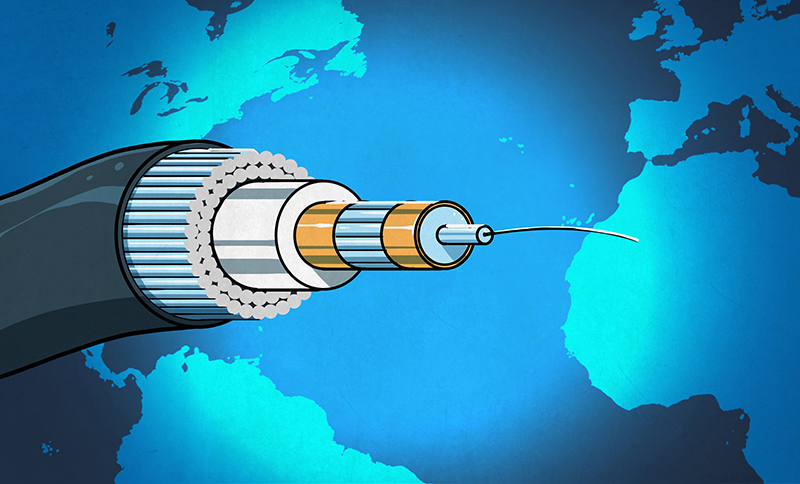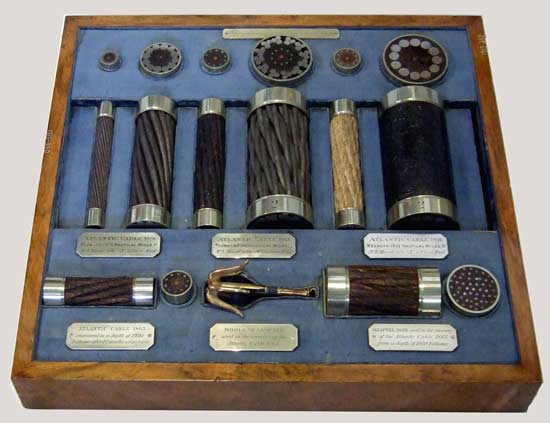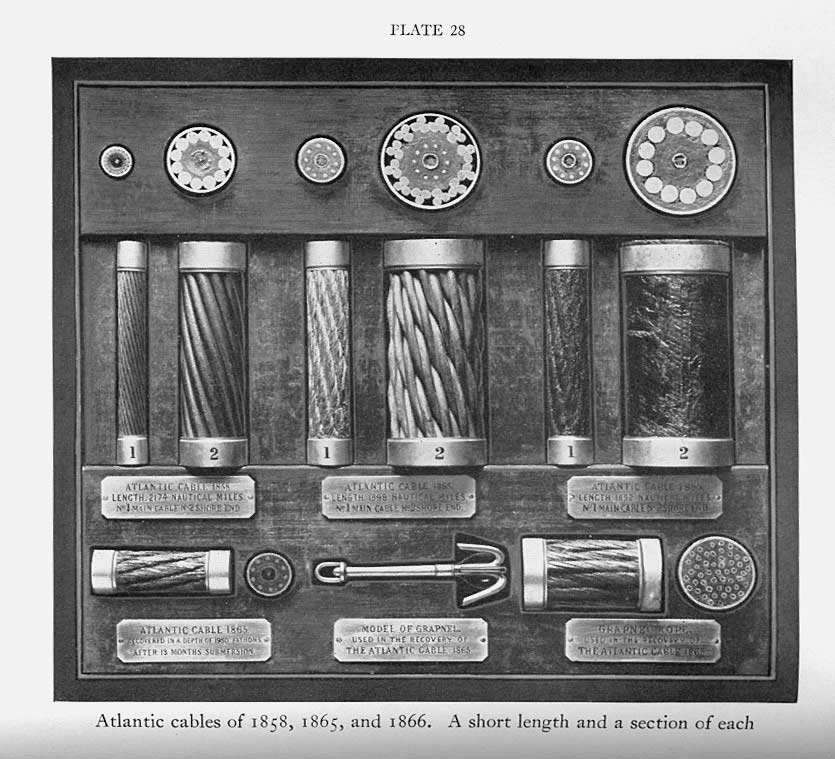The first transatlantic cables - when did they appear and how did they work?

Sometimes it seems that all these "your Internet" have always existed. Cellular communication, Internet, instant information exchange between users of different countries and continents. But this is not so - even in the 19th century, the world was rather isolated, some parts of the world had little contact with each other. In the second half of the century, the telegraph began to develop, penetrating into all spheres of life of the people of that time. But initially the speed of information transfer across the ocean was equal to the speed of the fastest ship of that time, which transported letters and parcels - and it should not be forgotten that after the voyage the messages were distributed by ground services.
Telegraph companies and businessmen associated with them hoped to lay the first transatlantic cable by 1850. But all these plans looked too fantastic - at least until Cyrus West Field got down to business. By his 30 years he had accumulated considerable capital, retired and decided to invest in the project of a transatlantic cable, stretching from Newfoundland to Ireland.

Samples of cables from 1858, 1865, and 1866 that formed the transatlantic link
')

Here is the cable of 1865, the model of the harpoon and the steel cable of the time.
The project began to implement, but problems started immediately. The first cable burst after a few kilometers, because the engineer responsible for laying the cable stopped the coil while the ship was moving. It took several expeditions to complete the laying, which was done by 1858. Queen Victoria welcomed the completion of the project (on August 16, she sent a telegram “Her Majesty wishes to congratulate the President on the successful completion of this great international project, to which the Queen showed deep interest”) and President Bukkenen . In fact, everything did not work very well - the cable did not allow data to be transferred quickly, the message of 96 words was transmitted for several hours. The quality of communication quickly deteriorated, and even the transfer of one word took about an hour. A month later, the line just died due to the main energy. He filed for a 2000 volt line, and the cable became unusable.

The same samples from the illustration of the 1932 Great Inventions book.
New cables were laid. Thanks to a better selection of personnel (technicians, engineers), cable laying was also more successful, and the line itself worked much better than the previous one, although its structure and the cables themselves were similar. Already by 1870 there were many cables; a whole web of lines was formed.
TAT-1: Can you hear me?
In spite of the fact that technologies developed very quickly, and in 1870 telephone communication was also added, the first transatlantic telephone system appeared only in 1956. The system is called TAT-1. Such a long time may seem strange, but it should still be remembered that telephone communication is more complicated than telegraph communication, and laying 2800 km of telephone wire so that the line can be used is not an easy task.
The first submarine telegraph cables were simple - copper conductors were isolated and protected from water using natural materials like gutta percha . Cables were also armored with steel cable. But the capacity of the telephone line must be much higher than the capacity of the telegraph line, and the conductors running in the cable parallel to each other, did not provide optimal data transmission conditions. Therefore, other types of cables were created - for example, coaxial cables, which are not very expensive, and allow for greater throughput.

The TAT-1 system included two cables — one for communication between the west and east, and the other for feedback. The cable consisted of a central conductor, a polyethylene dielectric and several layers of copper foil. It was protection for both the signal and the protection against marine animals (so-called sea worms, etc.). The coaxial cable was enclosed in a fabric winding and impregnated jute. Then it all consisted of steel wire armor. Closer to the shore, the cable was booked even stronger to protect against anchors and trawls.
The cables were equipped with flexible built-in repeaters to amplify the signal at intervals of 69 km. The size of each repeater was 2.5 meters, and included three electron tubes protected from pressure at a depth of 8000 m. The repeaters provided a signal of 65 dB and a frequency of 144 kHz. It was decided to use vacuum lamps even though the repeaters themselves were developed at Bell Labs, where transistors were developed (at about the same time). It was considered unproven that the transistor can provide the same high-quality work as the lamp. Perhaps the decision was correct - none of the hundreds of lamps failed within 22 years of cable operation.
After commissioning, the TAT-1 cable ensured the operation of 36 lines - 35 telephone channels with a capacity of 4 kHz and 22 telegraph channels on 36 lines. A little later, the number of channels increased to 51. In 1963, the teletype line between Moscow and Washington was launched, and it also passed through TAT-1. The TAT-1 highway worked until 1978, and during this time other alternatives and cable standards have emerged. All TAT cables were decommissioned, except for TAT-14, a fiber optic cable with a bandwidth of 9.38 TB / s, which was put into operation in 2001.
Now there are hundreds of cables , they pass through the oceans and almost all the continents, except Antarctica.
And all this - thanks to the technological innovations of the 19th century.
Source: https://habr.com/ru/post/392019/
All Articles